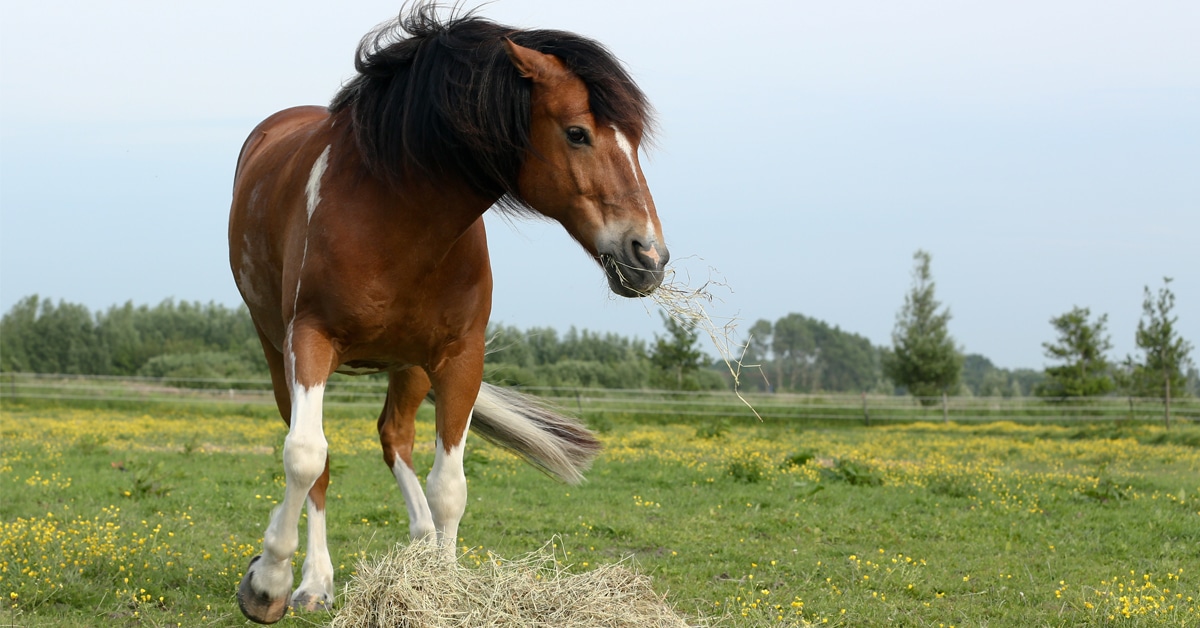For centuries, horse breeders have chosen to mate specific sires and dams based on information in pedigrees and traits that they find desirable within them. The goal of pedigree analyses, and the resulting breeding pair selection, is production of successful offspring through the propagation of beneficial genes.
Although this has worked well, there are problems associated with breeding within a closed book that will not be well managed by pedigree analyses. For example, genes associated with disease may be selected for when linked to desirable traits. Additionally, inbreeding may result in important copies of genes being removed from the population.
The first reference genome for the horse was published in 2007. Since then, the equine research community has been able to use this resource to catalog genetic variants (called alleles) that occur in the horse and measure their frequencies across breeds. This has been a powerful tool for identifying disease-causing genetic variants. Additionally, animals who are carriers can be identified and therefore the passing of these alleles to the next generation can be managed.
A genome is the complete set of genetic information in an organism that provides all of the information the organism requires to function. The genome is stored in long molecules of DNA called chromosomes.
Inbreeding is a practice used to “fix” gene alleles that produce the most desirable traits, removing the copies of the genes that don’t produce the trait. It is how we create breeds with distinguishing characteristics. However, there is a chance that animals can become too inbred, and that many important genes with benefits that are not as obvious are also purged, resulting in an unexpected increase in less fit animals in the population.
An inbreeding value quantifies exactly how much genetic diversity an animal has inherited. This number can be calculated exactly with genetic data. Inbreeding values derived from pedigrees, however, are not going to be as accurate. Excluding the sex and mitochondrial chromosomes, a foal will inherit exactly half of its genomic content from its sire, and the other half from its dam. What is inherited from the respective grand-sires and grand-dams is going to be roughly 25%, but not exactly.
This inaccuracy makes pedigree-based inbreeding calculations unreliable for an animal, and by extension for the population. By performing whole genome sequencing on an animal and quantifying the density of homozygous regions of the genome (regions inherited from each parent that are identical at the nucleotide level), the actual measure of inbreeding can be assessed. Once measured, a rate of change for inbreeding can be monitored. Although a so-called tipping point for inbreeding, i.e., when genetic diversity becomes too low to maintain a healthy population is almost impossible to assess, changes of rate of inbreeding can be easily measured and changes in that rate can be addressed.
Likewise, when a seemingly inherited trait emerges, whether negative or positive, genome sequencing is the best tool for identifying the gene alleles associated with, and perhaps responsible for, that trait. This is not to say that it will easily provide the answers, as many traits are genetically complex in nature, but it is the best approach for analyzing the genetics of an animal or population to gain an understanding of the underlying genetic cause.
Having a reference genome and being able to inexpensively look at an animal’s genetic composition [ed. there are companies who perform this service] is by no means a complete solution to the genetic problems that affect horse health. They are, however, essential components among the resources we need to understand the genetic basis of health and well-being in these animals.
~ Ted Kalbfleisch, Ph.D., Gluck Equine Research Center, University of Kentucky
The Latest










